Played on Xbox Series S
Work on Metaphor: ReFantazio began eight years ago – quite a long time, but Atlus needed to come up with a completely new universe and figure out how to transfer the familiar mechanics from Persona and Shin Megami Tensei there. The longer you play, the more clearly you understand that the developers coped with both tasks brilliantly. This world will be remembered for a long time thanks to the many cool characters and stories associated with them, and the gameplay combines both old ideas that have been developed and completely new ones.
⇡#We are not welcome here, but we are happy
First of all, Metaphor: ReFantazio is impressive in scale. It’s not just about the playing area, although it is quite large. The capital of the local kingdom alone turned out to be larger than Tokyo from Persona 5, but besides it there are many other places to visit, including settlements and various dungeons, for the sake of exploring which we first use the runner (a huge vehicle here), and then we can simply teleport. At the same time, you are surprised at how well-developed the universe is and how much you want to study every detail that allows you to learn more about it.
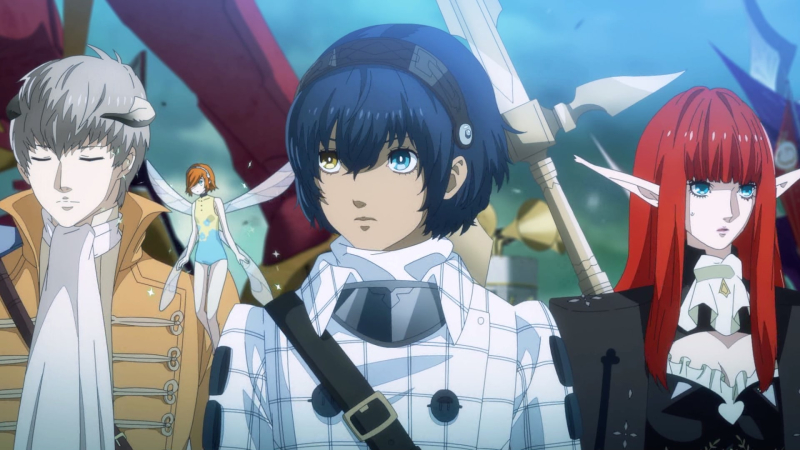
Just as in Persona 5 I always waited for the coolest anime videos, so here you are happy to see them
This is largely due to the screenwriters, who managed to successfully throw in several hooks from the very first minutes. Here we have a king who is killed in his own room by some scoundrel named Louis, saying that the monarch’s dreams of an ideal world where everyone lives together will not come true. No one arrests the killer and no one seems to even realize that it was him – on the contrary, Louis is participating in the race to become the new ruler. Then we learn about the prince who was cursed by the same Louis, and after that we ourselves get involved in this race. What are Louis’ motives? Can a kid like us win? And this is just the beginning – there will be a lot more interesting things to come.
The main themes of the game are religion and racism. More precisely, the influence of religion on the life of the kingdom and the problems that mutual rejection in society leads to. There are almost a dozen races in this world, and not all of them are equal in rights: while representatives of one are respected and revered by everyone, others in rags beg on the street. Our hero, whose name we choose ourselves, belongs to the Eldish race, and he is unlucky in this regard – others consider the Elds to be inferior creatures and are generally surprised that they still exist. Therefore, as soon as the hero arrives in the capital, he immediately encounters widespread racism – to the point that some people do not even allow him into shops. And if they let you in, they always say something nasty.
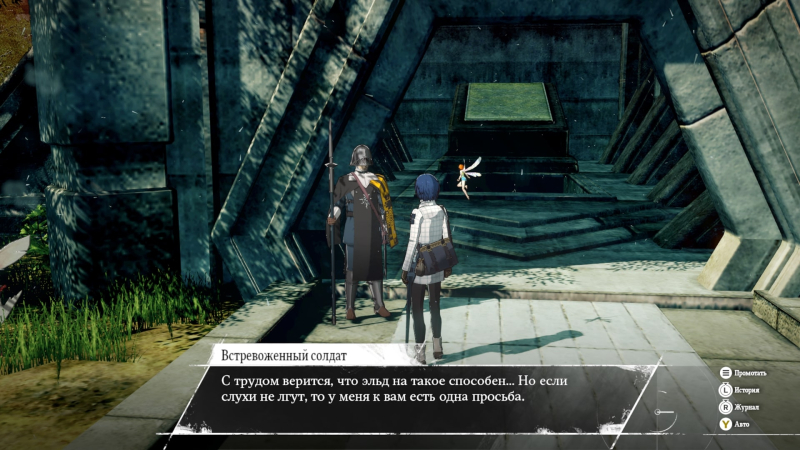
Forgot to ask you
The topic is complex, and the story could easily slide into banality like “racism is bad,” but Atlus managed to do everything at the highest level. The main themes are brilliantly woven into the narrative and distributed throughout the plot in a thin layer, rather than being pushed out at the first opportunity. And the journey of our Eld hero and his new friends is brought to the fore. Moreover, this is really a journey – with riding on a runner, gatherings around fires, teleportations from one city to another, including in order to take photographs from distant places to someone. It’s especially funny that every night the characters gather for dinner at a diner and discuss the results of the past day, and are also reminded that time is running out and they will soon have to go on their main mission.
⇡#Life on a schedule
Yes, like Persona, there is a calendar, and many story missions must be completed before a certain date. As well as some side benefits, but there are noticeably fewer of them than permanent ones. Only day and evening are free in a day, and if during the day you fought with someone in dungeons or went hunting, then in the evening the character is exhausted. But if at the beginning of the day you talked with someone or performed simple activities, then you can do something else before going to bed. At first, the timer seems merciless – here you have side quests, increasing royal characteristics (for example, courage and eloquence, without which you cannot take on new tasks), and communicating with friends. Yes, and story missions are sometimes difficult to complete in one day; you have to stretch out the process.
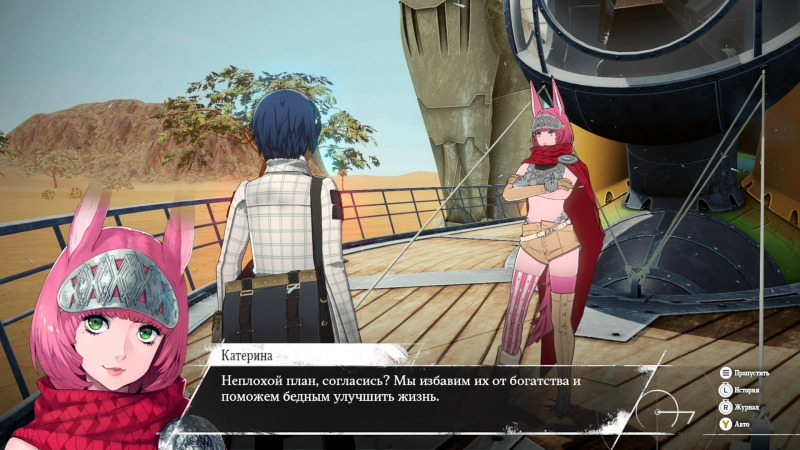
Everyone who wants to change the world for the better quickly makes friends with the main character
However, over time, it becomes easier and easier to decide which things are more important. When a companion or comrade wants to talk to you, this is announced at the beginning of the day, so you can quickly move to him. Some additional tasks (including hunting monsters) give not only an increase in characteristics, but also a lot of money – and they are needed to buy expensive equipment. Yes, of course, you won’t have time to do everything, but it’s not necessary – as in “Persona,” no matter what path of character development you take, you won’t have any difficulties getting through it. Here the player has to decide whether he likes spending time with the characters or whether it’s better to fight once again and hone his skills – especially since the leveling system here encourages you to go through battles in different conditions.
The fact is that in Metaphor: ReFantazio the developers moved away from the idea of collecting monsters and did not completely copy Persona and Shin Megami Tensei. Here, the opponents in the locations are just opponents with whom you do not interact in any way after the battle. Not only that, but you can defeat them even before engaging in turn-based battles – if your level is high enough, you would have taken them out in one hit anyway. It is also advisable to attack larger and more dangerous monsters in advance – if everything works out, they will all be stunned at the beginning of the battle, and this will allow you to beat them with impunity for two whole turns. Even if in fact there are as many as five “hiding” behind one walking enemy, as often happens in JRPGs. The advantage of preventive strikes is very large, so it is advisable not only to attack everyone, but also not to allow the enemies to bite you – there is a roll button for this.
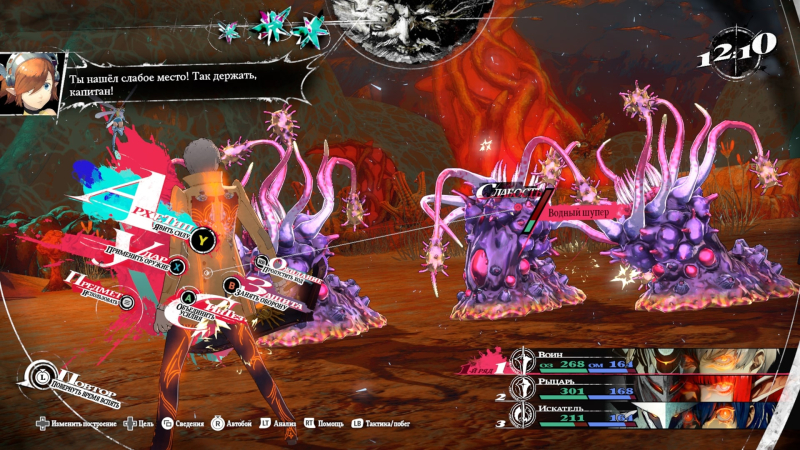
The interface only seems overloaded – there are no difficulties at all in combat
⇡#Not persons, but archetypes
The combat turned out to be about the same as in other Atlus games. First, one side makes moves, then the other responds. As always, all enemies have both weaknesses to certain elements and attacks, and the ability to repel some attacks or absorb damage, turning it into health. Each squad member is allocated one turn, but you can add additional ones if you successfully hit the enemy’s weak points. This is also true for enemies – if one of your characters is vulnerable to fire and you come across a fire opponent, then each of his attacks will be critical and allow you to make two hits instead of one.
To make the most effective use of your heroes’ abilities, it is often desirable to transfer moves to allies – for example, if one character cannot hit weak points, but the second can. There are also powerful joint attacks (or defensive skills), which cost two turn points at once. What pleases you most about the local “combat” is the ability to instantly restart the battle at any time, and all the weaknesses of your opponents that you discover will remain marked in the interface. This is especially convenient against bosses, fights with which are usually not limited to the banal beating of each other in turn. Not only do these fights offer interesting mechanics and unexpected surprises, but the design of the bosses is many times more interesting than even in Persona 5. These are either unusual creatures or grotesque monsters, the design of which cannot even be compared with anything, except perhaps the characters of Bosch .
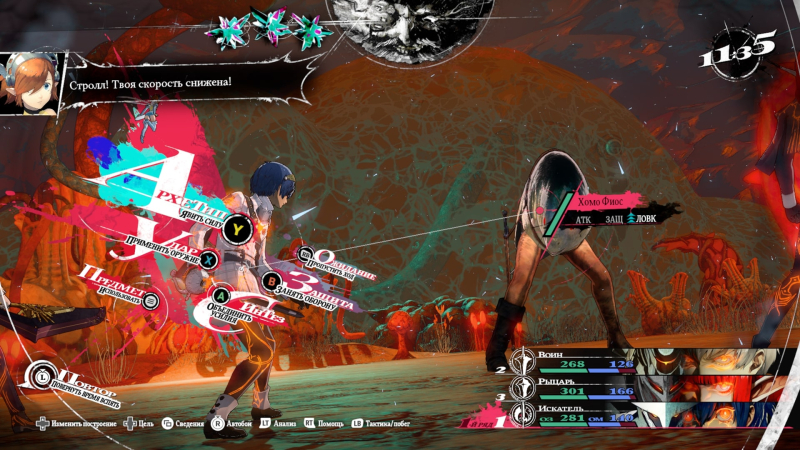
Fish with legs? Why not
But the local people… more precisely, the archetypes, are not so visually impressive, there are few external differences between them; but they grant different skills. In this game, archetypes serve as something like classes or professions, and each character you meet “teaches” you their archetype if certain conditions are met. Some professions are given out based on the story, while others you need to try to find yourself – for example, if you don’t complete a side quest, you won’t get access to them. There is no point in grieving over this – there are plenty of classes here. Not as many as the creatures in Persona and Shin Megami Tensei, but still enough. By completing tasks and defeating enemies, you receive a muggle – these are the points needed to purchase archetypes, and you can give any profession to any character. This is important because with the help of informants you can find out the strengths and weaknesses of the bosses and prepare – for example, not taking mages if they are weak against someone, or taking a warrior and a knight to deal powerful physical damage.
The freedom of action is enormous – so much so that to purchase new archetypes and switch them, you don’t even need to go to the local equivalent of the “Purple Room” from Persona. Everything is done right on site. They are allowed to experiment as they please and with anything – there is no need to worry about the Muggles not being enough. The higher the level of the archetype, the more new combat abilities you unlock (including passive ones), and they can also be transferred between different professions. It is especially gratifying that the game does not punish you for using the same archetype when you have leveled it up to the maximum – the character continues to gain experience, and for each “extra” level you are given an item that allows you to quickly improve another archetype. And as you get to know the characters more closely, you unlock advanced versions of archetypes, with more powerful spells.
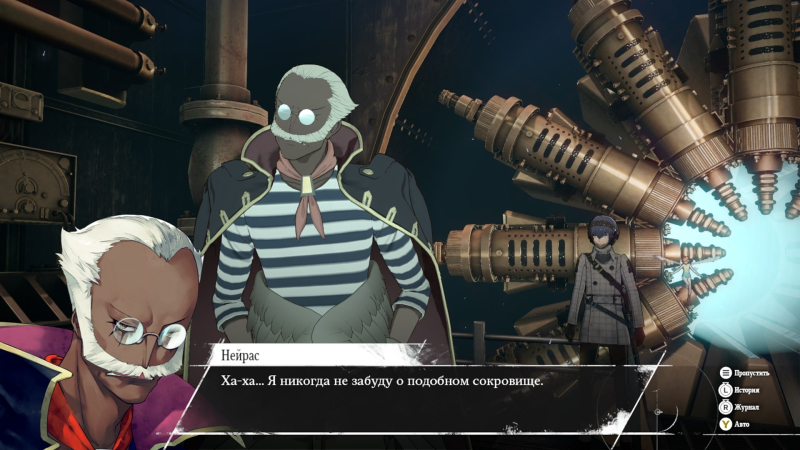
And then they will shake hands and one will pass on his archetype to the other
***
You can’t tell everything in one material. For example, about the wonderful design of dungeons, where there are simple puzzles, all sorts of secrets, and hidden passages leading to treasures. Or that the protagonist is now talking. He just occasionally says lines and is not too verbose, but such a character is more interesting to play than silent idols. Or about the interface design – the designers have outdone themselves, and against the backdrop of the local menus, Persona 5 no longer looks so cool. Although there are inconveniences – for example, it is not clear who is currently wearing (and whether) the equipment from the general list of things. Overall, Metaphor: ReFantazio is a wonderfully huge JRPG where you can spend hundreds of hours exploring the world, meeting new characters and experimenting with archetypes. It’s no longer such a shame that Persona 6 is delayed.
Advantages:
- An exciting story and a universe that is interesting to dive into;
- Many gameplay systems migrated here from other Atlus games – some fit in perfectly unchanged, others were adjusted in an original way;
- Likable characters – both companions of the main character and minor characters and antagonists;
- A wonderful turn-based combat system that makes every battle exciting;
- A convenient archetype system that allows you to change character abilities on the fly;
- It’s interesting to explore dungeons, look for secrets and stumble upon surprises;
- Chic visual style and pleasant music.
Disadvantages:
- The archetypes look very similar to each other – the charismatic monsters from Persona and SMT are missing;
- Minor roughness in the interface.
Graphic arts
Atlus’ JRPGs have always been a feast for the eyes, and this game is no exception. Both the interface and the gameplay – everything is so well drawn that you want to take screenshots even just for yourself. And there’s no need to talk about the appearance of the opponents.
Sound
Brilliantly voiced main characters and wonderful music – the theme that sounds during battles, then you hum in the shower (put the emphasis where you want).
Single player game
A large, long and very exciting JRPG – just as fans of the genre love.
Estimated time of completion
At least 70 hours to complete the story, but in reality you will spend much more.
Collective game
Not foreseen.
General impression
A huge JRPG that Atlus has taken to the next level. A wonderful story, exciting battles and the same brilliant visual style – almost everything is executed at the highest level.
Rating: 9.5 / 10
More about grading system
Video: